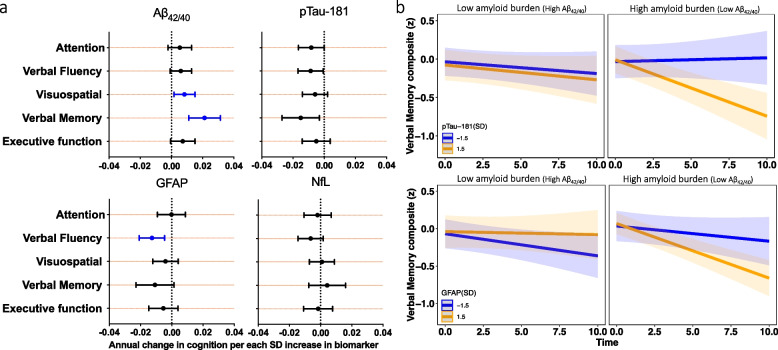Fig. 4.
Association between baseline plasma biomarkers and longitudinal cognitive change. a. Results are derived from linear mixed effect models adjusted for baseline age, sex, race, education level, and estimated glomerular filtration rate (eGFR), and the interaction between covariates and time. Estimates, derived from the plasma biomarker × time interaction terms, represent the difference in annual change in cognition (β estimates) per standard deviation increase in baseline biomarker. Blue bars reflect significant associations between plasma biomarkers and cognition by domain at an FDR corrected threshold (P < 0.05). b. Results are derived from separate linear mixed effect models that examined Aβ42/40 as a moderator of the association between plasma biomarkers and longitudinal cognition (models were also adjusted for baseline age, sex, race, education level, eGFR, and the interaction between covariates and time). Each figure (blue lines: low biomarker [e.g., pTau-181 or GFAP] or -1.5 standard deviations below the mean; orange lines: high biomarker [e.g., pTau-181 or GFAP] or + 1.5 standard deviations above the mean) shows the marginal effects for the following interaction terms pTau-181 × time × Aβ42/40 status or GFAP × time × Aβ42/40 status on verbal memory. Abbreviations: Aβ: amyloid-β; GFAP: glial fibrillary acidic protein; NfL: neurofilament light chain; pTau-181: tau phosphorylated at threonine-181.

